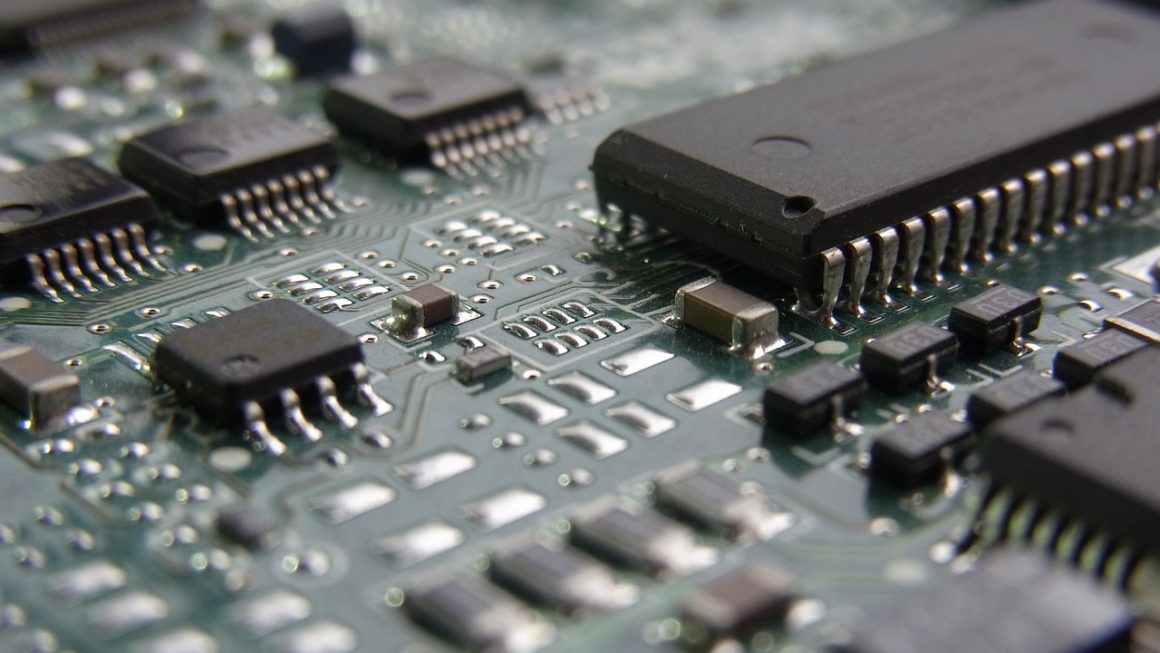The world of technology is in a constant state of flux, with innovations emerging at an unprecedented pace. Staying ahead of the curve is crucial for businesses and individuals alike, as these emerging tech trends shape not only our digital experiences but also our future. From artificial intelligence to sustainable technology, understanding these advancements can unlock new opportunities, improve efficiency, and drive innovation across various industries. Let’s dive into some of the most impactful tech trends making waves right now.
Artificial Intelligence (AI) and Machine Learning (ML)
Artificial Intelligence (AI) and its subset, Machine Learning (ML), are no longer futuristic concepts; they are integral parts of our daily lives. These technologies are transforming how we work, communicate, and interact with the world.
AI-Powered Automation
AI-powered automation is streamlining processes across industries, from manufacturing to customer service.
- Robotic Process Automation (RPA): RPA uses software robots to automate repetitive tasks, freeing up human employees for more strategic work. For example, banks are using RPA to automate account reconciliation and fraud detection.
- Intelligent Automation (IA): IA goes beyond RPA by incorporating AI technologies like machine learning and natural language processing (NLP) to automate more complex tasks. Imagine an IA system automatically triaging customer support tickets based on sentiment analysis.
- Benefits: Increased efficiency, reduced costs, improved accuracy, and enhanced customer experience.
Generative AI
Generative AI is creating new possibilities in content creation, design, and more.
- Text-to-Image Generation: Tools like DALL-E 2 and Midjourney are revolutionizing how visuals are created, allowing users to generate images from textual descriptions. This has profound implications for marketing, design, and entertainment.
- Code Generation: AI can now generate code snippets or even entire programs based on user input. This empowers developers and enables non-programmers to create simple applications. GitHub Copilot is a prime example of this.
- Ethical Considerations: It’s crucial to consider the ethical implications of Generative AI, including issues of copyright, bias, and misinformation.
AI in Healthcare
AI is transforming healthcare through diagnostics, personalized medicine, and drug discovery.
- AI-Powered Diagnostics: AI algorithms can analyze medical images (X-rays, CT scans, MRIs) to detect diseases like cancer with greater accuracy and speed than human radiologists.
- Personalized Medicine: AI can analyze patient data to create personalized treatment plans tailored to individual needs and genetic predispositions.
- Drug Discovery: AI is accelerating the drug discovery process by analyzing vast datasets to identify potential drug candidates and predict their effectiveness.
The Metaverse and Web3
The Metaverse and Web3 represent the next evolution of the internet, promising immersive experiences and decentralized control.
Immersive Experiences in the Metaverse
The Metaverse is a persistent, shared, 3D virtual world that users can access through virtual reality (VR) and augmented reality (AR) devices.
- Virtual Events and Collaboration: Companies are using the Metaverse to host virtual events, conferences, and team meetings, creating more engaging and interactive experiences.
- Gaming and Entertainment: The Metaverse offers new possibilities for gaming and entertainment, allowing users to participate in immersive virtual worlds and interact with each other in real-time.
- Challenges: Widespread adoption of the Metaverse faces challenges related to hardware affordability, accessibility, and interoperability.
Decentralization with Web3
Web3 aims to decentralize the internet using blockchain technology, giving users more control over their data and online interactions.
- Blockchain Technology: Blockchain provides a secure and transparent way to record transactions and manage digital assets.
- Decentralized Applications (dApps): dApps are applications that run on a blockchain network, offering greater transparency and security compared to traditional centralized applications.
- Non-Fungible Tokens (NFTs): NFTs are unique digital assets that represent ownership of items like artwork, music, or virtual real estate. They are transforming the way creators monetize their work and interact with their fans.
Practical Applications of Web3
Web3 has numerous practical applications across various industries.
- Supply Chain Management: Blockchain can be used to track products throughout the supply chain, ensuring transparency and authenticity.
- Digital Identity: Web3 enables users to create and manage their own digital identities, giving them more control over their personal data.
- Decentralized Finance (DeFi): DeFi offers alternative financial services, such as lending, borrowing, and trading, without the need for traditional intermediaries.
Sustainable Technology
As environmental concerns grow, sustainable technology is becoming increasingly important. Innovations in this area aim to reduce our environmental impact and promote a more sustainable future.
Renewable Energy Solutions
Renewable energy sources like solar, wind, and hydro power are becoming more efficient and affordable.
- Advanced Solar Panels: New solar panel technologies are increasing energy conversion efficiency and reducing manufacturing costs.
- Wind Turbine Innovations: Larger and more efficient wind turbines are generating more electricity with less environmental impact.
- Energy Storage Systems: Battery storage systems are crucial for storing renewable energy and making it available when needed, particularly during peak demand periods. Tesla’s Powerwall is an example.
Green Computing
Green computing focuses on reducing the environmental impact of computing devices and data centers.
- Energy-Efficient Hardware: Manufacturers are developing more energy-efficient processors, memory modules, and storage devices.
- Virtualization and Cloud Computing: Virtualization and cloud computing enable organizations to consolidate their IT infrastructure and reduce energy consumption.
- Data Center Optimization: Data centers are implementing energy-efficient cooling systems and optimizing server utilization to minimize their environmental footprint.
Circular Economy and E-Waste Management
The circular economy aims to minimize waste and maximize the reuse of resources.
- Product Design for Durability and Repairability: Designing products that are durable and easy to repair extends their lifespan and reduces waste.
- E-Waste Recycling Programs: Recycling programs are crucial for recovering valuable materials from electronic waste and preventing harmful substances from polluting the environment. Companies like Apple have trade-in programs.
- Refurbishing and Reselling Electronics: Refurbishing and reselling used electronics reduces the demand for new products and extends the lifespan of existing devices.
Cybersecurity Advancements
With increasing cyber threats, cybersecurity advancements are critical for protecting data and systems.
AI in Cybersecurity
AI is being used to detect and prevent cyberattacks more effectively.
- Threat Detection: AI algorithms can analyze network traffic and system logs to identify suspicious activity and potential threats.
- Incident Response: AI can automate incident response processes, such as isolating infected systems and blocking malicious traffic.
- Vulnerability Management: AI can identify and prioritize vulnerabilities in software and systems, enabling organizations to patch them before they are exploited.
Zero Trust Architecture
Zero Trust is a security model that assumes no user or device is trustworthy by default.
- Principle of Least Privilege: Users are only granted the minimum level of access they need to perform their job functions.
- Multi-Factor Authentication (MFA): MFA requires users to provide multiple forms of identification before gaining access to systems and data.
- Continuous Monitoring: Network traffic and user activity are continuously monitored to detect and respond to threats.
Quantum-Resistant Cryptography
Quantum computing poses a threat to traditional encryption methods.
- Post-Quantum Cryptography (PQC): PQC algorithms are designed to be resistant to attacks from quantum computers.
- Key Distribution Techniques: New key distribution techniques are being developed to secure communications in the age of quantum computing.
- Migration Strategies: Organizations are developing strategies to migrate their systems to PQC algorithms before quantum computers become a widespread threat.
Conclusion
Keeping abreast of these evolving tech trends – from the pervasive influence of AI and Machine Learning to the transformative potential of the Metaverse and Web3, the growing emphasis on sustainable technologies, and the critical advancements in cybersecurity – is no longer optional. It’s a necessity for thriving in today’s rapidly changing world. By understanding these advancements and their implications, businesses and individuals can unlock new opportunities, improve efficiency, and contribute to a more innovative and sustainable future. Embrace the change, adapt to the new landscape, and leverage these technologies to create a brighter tomorrow.




